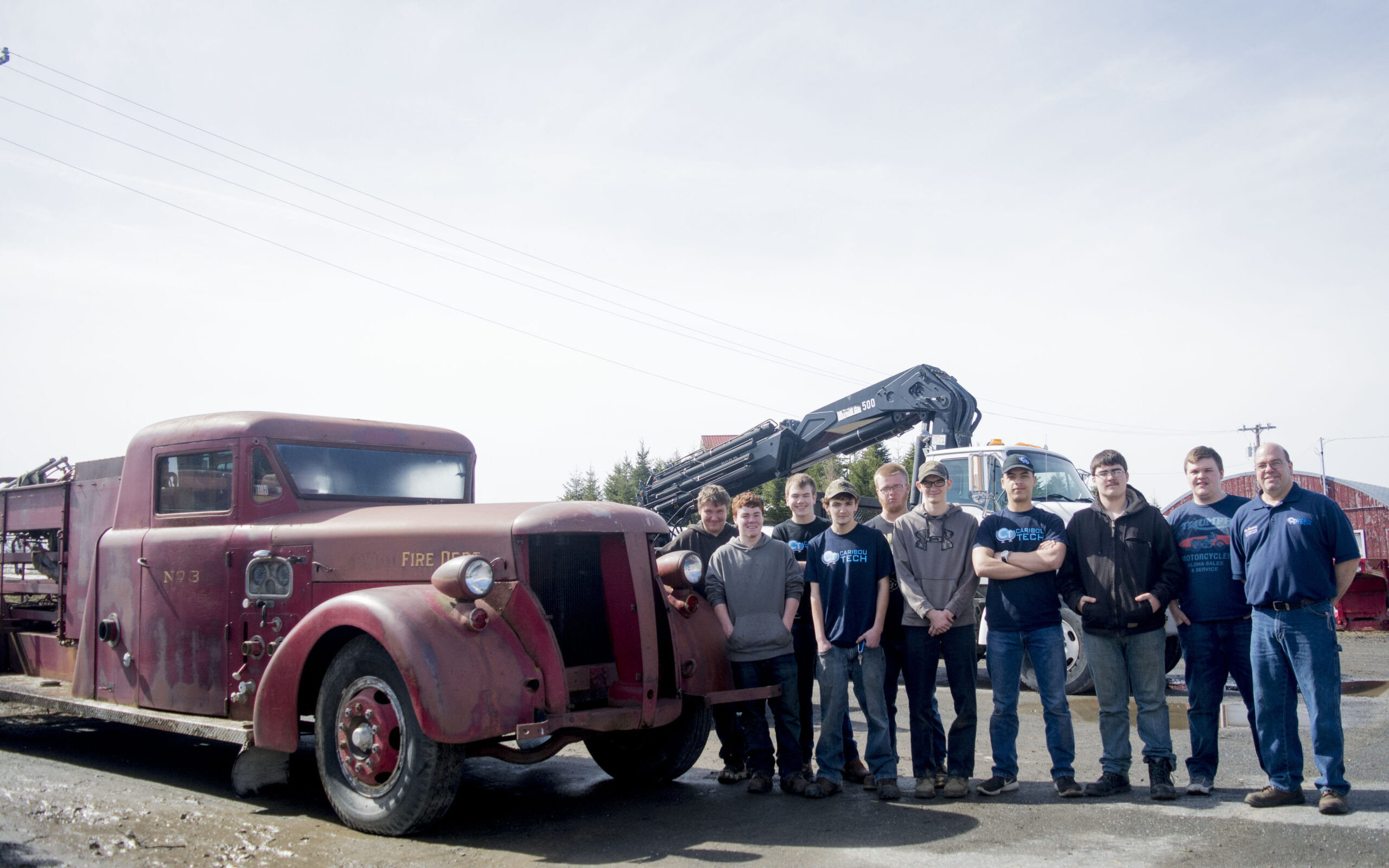
CARIBOU, Maine — Thanks to a small group of automotive technology students, the Caribou Fire Department is one step closer to restoring an antique 1945 American LaFrance fire truck.
Firefighter Scott Michaud said that the department two years ago re-acquired the truck, which had been purchased brand-new in 1945. Since then, firefighters have been searching for a way to restore the vintage vehicle back to its former glory.
“We were looking for someone to help us restore it because we don’t have the time, or tools, to work on it ourselves,” Michaud said.
He then had the idea to contact his friend Kevin Keaton, who teaches Automotive Technology at the Caribou Regional Technology Center. Keaton and his class overcame numerous obstacles to get the truck running once again.
“We had to fix a lot of wiring issues,” Keaton said. “Rodents, mice, and squirrels had gotten into the truck and chewed everything up.”
Vocational students replaced four coil wires and 24 spark plug wires, which Keaton said “was a project all in itself.”
“The wires run through tubing,” said the instructor. “The primary wires on the ignition were broken so we had to go in and replace those. Finding literature on that was challenging. [Fire Chief] Scott Susi and the volunteers helped out a lot, and we put a lot of information together to figure out what’s what and where it goes. We got to the point where we had to start from square one and put the jigsaw puzzle back together.”
Parts required to get the fire truck running were often difficult to find or out of production. But the students were able to improvise. When they couldn’t find a gasket, for example, they made their own in the shop.
“We had to use a template for the valve cover,” said student Jarred Jordan. “We had to match up the holes, draw it on a cork board, and cut it out.”
He said the process didn’t take very long, “maybe an hour max,” and that Michael Rossignol, a fellow student, did most of the work creating the new gasket.
“I’m mainly the one who did the gaskets,” Jordan said. “I took the heads off and put them all back together to rebuild the carburetor.”
Wilder Mitchell said most of the work he and his classmates accomplished was done as a group, and that they spent “two or three weeks” bringing the engine back to life.
“It was more of a team effort,” he said. “We all worked together.”
Mitchell said he and his classmates learned that while “some older things are easier to work on than newer things,” older vehicles can sometimes be far more difficult to repair “than they should be.”
“Another obstacle was that there was a lot of water in the gas tank that we didn’t know about,” said Jordan.
“We ended up using a gas caddy,” said Mitchell, adding that the fire truck wouldn’t even start when they began work.
Keaton commended his students on a job well done, and said he hopes the process taught them about the importance of helping others.
“We try to teach kids about community outreach,” Keaton said. “There are a lot of times when you do things for someone, and you don’t get paid for it. You do it because it’s the right thing to do.”
He added that his students “definitely learned that old technology can be just as challenging as new technology.”
Michaud concurred, and said “a lot of technology has changed over the years.”
“This truck doesn’t even have power steering,” he said. “All of the equipment is manual. Nowadays everything has power steering and is all electronic.”
The 1945 American LaFrance, which the department used as a ladder truck, holds two people and 150 gallons of water. Now, according to Michaud, one of the department’s trucks is capable of holding “five or six people” and “3,500 gallons of water,” and is equipped with a 75-foot hydraulic aerial ladder.
Jordan said the next step involves taking the truck to Loring Job Corps, where students will finish the body work and “make it look pristine.”
Michaud said he and the crew at the Caribou Fire Department “appreciate the Caribou vocational kids working on the truck for us,” and that, once it is completely restored, it will be driven in local parades.
“For us,” Michaud said, “it’s about maintaining a piece of history.”







